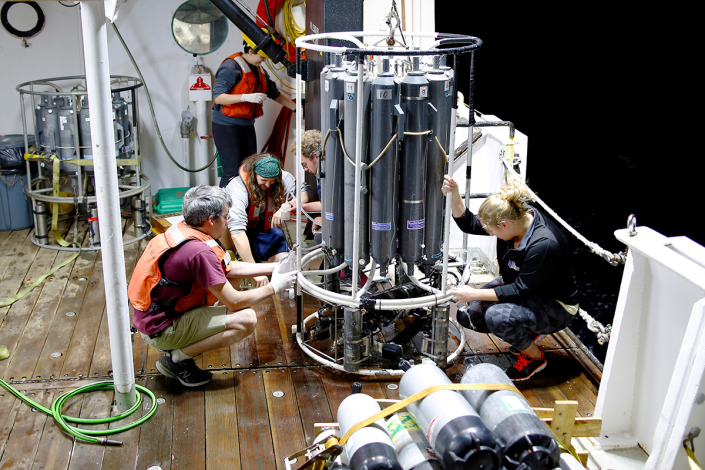After Harvey: How is sea life dealing with 13 trillion gallons of fresh water?

Image: College of Geosciences
More than 13 trillion gallons of floodwater from Hurricane Harvey have flowed into the Gulf of Mexico, researchers say, posing a threat to marine ecosystems and the salinity-sensitive coral reefs of the Flower Garden Banks National Marine Sanctuary, about 100 miles offshore from Galveston.
A U.S. research team that included two Texas A&M University faculty members recently returned from a six-day, late October expedition to collect data in the marine sanctuary’s reefs.
Kathryn Shamberger, assistant professor in the Department of Oceanography and a scientist with the Texas A&M Geochemical and Environmental Research Group, said the influence of Harvey runoff could still be seen along the coast right off Galveston, where salinity levels were low for this time of year. The team also discovered that salinity levels in the Flower Garden Banks National Marine Sanctuary were normal, but ongoing research is also needed.
“We will now compare the water quality data we collected last week to data collected in 2016 to assess the health of the reef now,” Shamberger said.
The research team sailed on the R/V Point Sur and included Texas A&M oceanography assistant professor Jason Sylvan, Rice University marine biologist Adrienne Correa, Boston University biologist Sarah Davies, and University of Houston-Clear Lake biologist Lory Santiago-Vazquez. The team expects to receive a one-year Rapid Research Response grant from the National Science Foundation to support their work at the Flower Garden Banks.
Texas A&M undergraduates Miranda Hooper and Brian Buckingham were also on the cruise, as was postdoctoral researcher Shawn Doyle.

